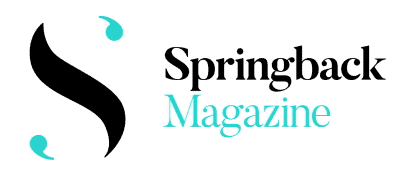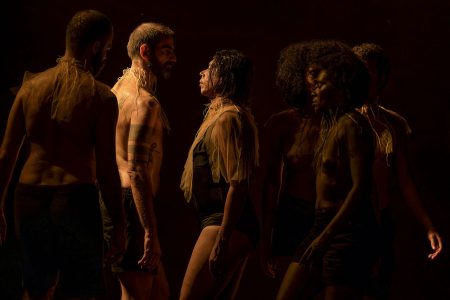Zoltán Vakulya leaps out of his seat, whirling like a sycamore leaf. He’s joined by Albert Quesada, and together they twirl and arc, at times close enough to graze one another’s skin. The music – a range of classic flamenco recordings – is a layering of voices and claps, with rousing rhythms that give the piece its title. But in Quesada’s own words, ‘this is not a flamenco piece’.
Vakulya’s body vibrates like a guitar string. The dynamic charge of flamenco music is given expression through sudden starts and stops – they move slowly, testing shapes, then in response to a singing voice they freeze as if struck. At times their bodies seem fractured, pulled apart. Vakulya holds Quesada’s head as he writhes uncomfortably. The two men have an intimate, yet ambiguous relationship – Vakulya slides his hands over Quesada’s ears, eyes, and mouth, and he dissolves to the floor. The whole piece has a deconstructed feel, right down to the costumes: Vakulya, topless, wears high waisted trousers; Quesada wears shorts and a top which resembles a flamenco jacket. They split the piece too, exiting abruptly through a curtain half way through.
Less than a minute later they burst back in to a stab of guitar, covering the floor with skittish footwork. Suddenly they sit again, turning to chat casually to audience members behind. Quesada sidles up to Vakulya and, covering his skin with rhythmic slaps, brings the ‘12312’ rhythm of flamenco rather literally to the surface: Vakulya grimaces in pain even as he offers his back for more.
The staging, with the audience on four sides, mimics a tablao but – with raked seats and harsh lighting – has none of its intimacy. It is difficult not to compare the piece to flamenco and find it lacking. In seeking to break flamenco apart, Quesada is left with something weaker.







